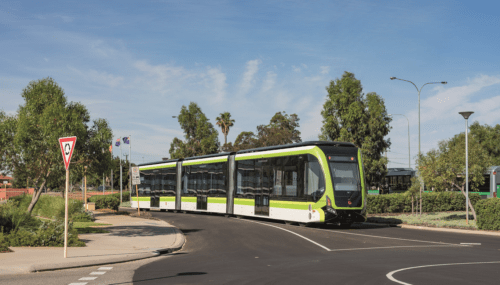
Building on his comments in this week’s editorial column, Jonathan Welch takes a closer look at the ‘trackless tram’ on trial in Stirling, Australia. Is it a bus? It’s not not a bus…
In this week’s editorial comment, I asked the question ‘what is a bus?’ after seeing the trial of a ‘trackless tram’ in the City of Stirling, which lies in the northern suburbs of Perth, Australia. It runs on rubber tyres and has a steering wheel at each end, so it’s not not a bus, but it seems that whatever it might be defined as, it’s worth a closer look as some of the technology might well be relevant to the ‘traditional’ bus sector.
The vehicle itself is produced by China’s CRRC, which has been pushing the system for a few years now and demonstrated it in a number of places. According to one study I found online, the trackless tram combines the ‘best’ of bus and tram, whilst costing a tenth of the price to install. Interestingly, the same paper mentions that software is used to prevent the kind of sway which causes rutting of the road surface; I’m not entirely convinced how effective that might be in the long term, though.
The paper also mentions some of the obvious benefits – being guided the ‘tram’ can achieve accurate platform docking, for example, although so can a conventional, guided trolleybus.
[…]By subscribing you will benefit from:
- Operator & Supplier Profiles
- Face-to-Face Interviews
- Lastest News
- Test Drives and Reviews
- Legal Updates
- Route Focus
- Industry Insider Opinions
- Passenger Perspective
- Vehicle Launches
- and much more!


